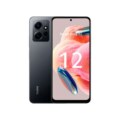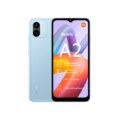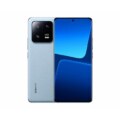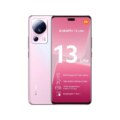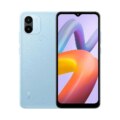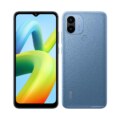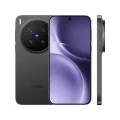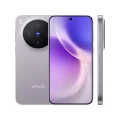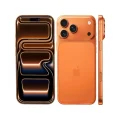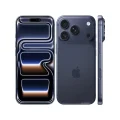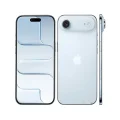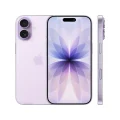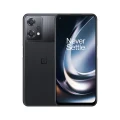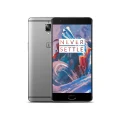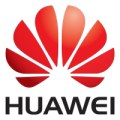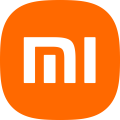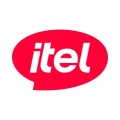- Home
- All Products
- Xiaomi
- Xiaomi Poco F7 Ultra
Xiaomi Poco F7 Ultra
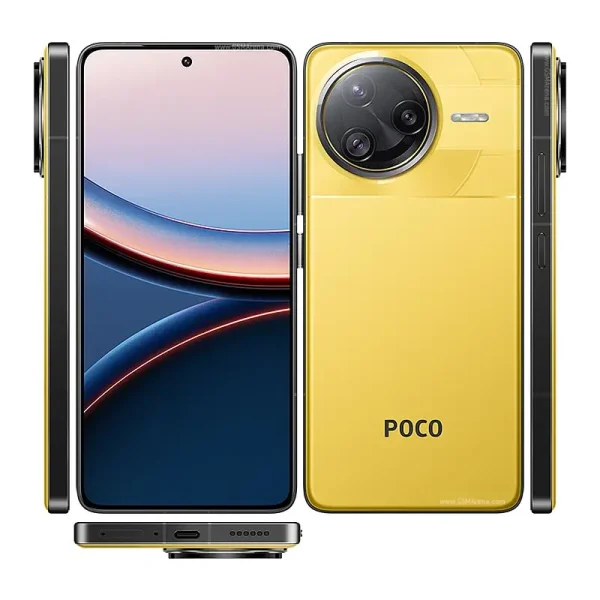

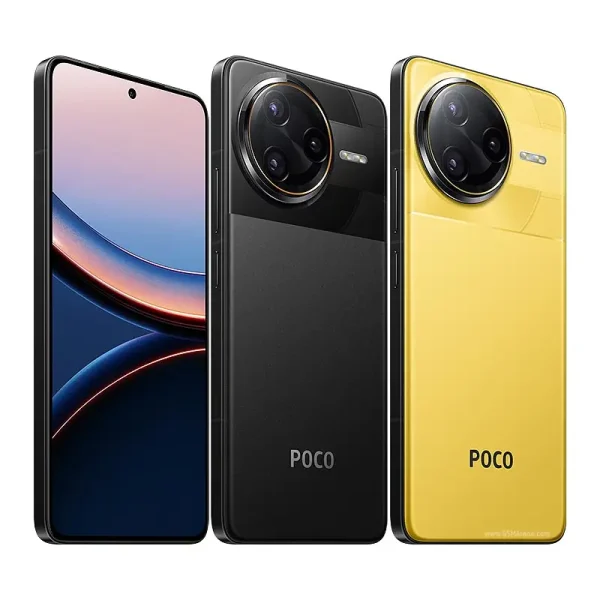
-
Battery: 5300 mAh
-
RAM: 12GB,16GB
-
Storage: 256GB, 512GB
-
Display: AMOLED, 6.67 inches
-
Camera: Rear 50MP+ 50MP +32MP and Front 32MP
-
OS: Android 15, HyperOS 2
Full Specifications
Price
| Unofficial | 74990 BDT 12GB/256GB Approx. |
General
| Model | Xiaomi Poco F7 Ultra |
| Announced | 2025, March 27 |
| Released | 2025, March 27 |
| Status | Available |
Design
| Dimensions | 160.3 x 75 x 8.4 mm (6.31 x 2.95 x 0.33 in) |
| Weight | 212 g (7.48 oz) |
| SIM SIM (Subscriber Identity Module) is a small card that contains mobile network subscriber's account information. This allows the phone using the card to attach to a mobile network. The SIM card is most commonly associated with GSM and UMTS mobile networks. Moving a SIM card from one phone to another allows a subscriber to switch mobile phones without having to contact their mobile network carrier. SIM cards can also be used by a phone to store limited amounts of data, such as phone numbers and text messages. |
Nano-SIM + Nano-SIM IP68 dust tight and water resistant (immersible up to 2.5m for 30 min) |
| Colors | Black, Yellow |
Display Specification
| Display Type Display Technology => A number of display technologies and types used in mobile phones => TFT (Thin Film Transistor), IPS (In-Place Switching), OLED (Organic Light Emitting Diode), AMOLED (Active-Matrix Organic Light-Emitting Diode), Super AMOLED (an even advanced version of AMOLED), Resistive Touchscreen (Resistive touchscreens contain two layer of conductive material with a very small gap between them which acts as a resistance), Capacitive Touchsceen (Capacitive touchscreen technology consists of a layer of glass coated with a transparent conductor) | AMOLED, 68B colors, 120Hz, 3840Hz PWM, Dolby Vision, HDR10+, 1800 nits (HBM), 3200 nits (peak) |
| Size | 6.67 inches, 107.4 cm2 |
| Resolution | 1440 x 3200 pixels, |
| Refresh Rate | 120Hz, 3840Hz PWM |
| Pixel Density Pixel Density (PPI) is refers to the concentration of pixels on a particular display, measured in pixels per inch (ppi). Pixel density is calculated by dividing the diagonal pixel resolution of a display by its diagonal size, higher pixel density better display quality. | 526 ppi density |
| Display Protection Display Protection => Gorilla Glass is a special alkali-aluminosilicate glass shield with exceptional damage resistance that helps protect mobile displays from scratches, drops, and bumps of everyday use, It is always better to go for a smartphone with Gorilla Glass for that added protection and peace of mind. | Poco Shield Glass |
Platform
| Operating System OS => Every computer system run on a base software called Operating System (OS). Operating System controls all basic operations of the computer (such as smartphone, PDAs, tablet computers and other handheld devices). The Operating System allows the user to install and run third party applications (apps), apps are used to add new functionality to the device. | Android 15, HyperOS 2 |
| Chipset Chipset is a group of integrated circuits designed to perform one or a more dedicated functions, often with real time computing constraints, Popular smartphones are equipped with more advanced embedded chipsets that can do many different tasks depending on their programming. | Qualcomm SM8750-AB Snapdragon 8 Elite (3 nm) |
| CPU CPU (Central Processing Unit) mostly known as processors, CPU processes instructions in order to carry out certain functions that make your device operate properly. Processors are often described as the brain of computers, smartphones and tablets, Smartphones and tablets rely on processors to carry out their every task, Processors are an incredibly important factor in selecting any type of computing device, including your smartphone. | Octa-core (2x4.32 GHz Oryon V2 Phoenix L + 6x3.53 GHz Oryon V2 Phoenix M) |
| GPU GPU (Graphics Processing Unit) is a single-chip processor designed to rapidly manipulate and alter memory to accelerate the creation of images in a frame buffer intended for output to a display, This includes things such as lighting effects, object transformations, and 3D motion. | Adreno 830 |
Main Camera
| Camera Setup | Triple |
| Resolution |
50 MP, f/1.6, 24mm (wide), 1/1.55", 1.0µm, multi-directional PDAF, OIS 50 MP, f/2.0, 60mm (telephoto), 1/2.76", 0.64µm, multi-directional PDAF (10cm - ∞), OIS, 2.5x optical zoom 32 MP, f/2.2, 15mm, 120˚ (ultrawide), 1/3.42", 0.64µm |
| Features | Color spectrum sensor, LED flash, HDR, panorama |
| Video | 8K@24fps, 4K@24/30/60fps, 1080p@30/60/120/240/960fps, 720p@1920fps, gyro-EIS |
Selfie Camera
| Camera Setup | Single |
| Resolution | 32 MP, f/2.0, 24mm, (wide), 1/3.42", 0.64µm |
| Video | 1080p@30/60fps, gyro-EIS |
| Features | HDR |
Network & Connectivity
| Technology | GSM / HSPA / LTE / 5G |
| Speed | HSPA, LTE, 5G |
| Wi-fi Wi-Fi is a popular wireless networking technology using radio waves to provide high-speed network connections that allows devices to communicate without cords or cables, Wi-Fi is increasingly becoming the preferred mode of internet connectivity all over the world. | Wi-Fi 802.11 a/b/g/n/ac/6e/7, dual-band, Wi-Fi Direct |
| Bluetooth Bluetooth is a wireless communications technology for exchanging data between mobile phones, headsets, computers and other network devices over short distances without wires, Bluetooth technology was primarily designed to support simple wireless networking of personal consumer devices. | 6.0, A2DP, LE, aptX HD, aptX Adaptive, aptX Lossless, LHDC 5 |
| NFC NFC (Near field communication) is a set of standards for smartphones and similar devices to establish peer-to-peer radio communications with each other by touching them together or bringing them into proximity, usually no more than a few inches. | Yes |
| Positioning | GPS (L1+L5), GLONASS (G1), BDS (B1I+B1c+B2a), GALILEO (E1+E5a), QZSS (L1+L5), NavIC (L5) |
| FM Radio | No |
| Infrared port | Yes |
| USB | USB Type-C, OTG |
| 2G Network | GSM 850 / 900 / 1800 / 1900 |
| 3G Network | HSDPA 800 / 850 / 900 / 1700(AWS) / 2100 |
| 4G Network | 1, 2, 3, 4, 5, 7, 8, 18, 19, 20, 26, 28, 38, 40, 41, 42, 48, 66 |
| 5G Network | 1, 2, 3, 5, 7, 8, 20, 26, 28, 38, 40, 41, 48, 66, 77, 78 SA/NSA |
Battery
| Battery Type Battery Type => Cell phones run on various kinds of batteries depending on the manufacturer, phone size or shape and features. There are basically four types of cell phone batteries => Lithium Polymer, Lithium Ion, Nickel Metal Hydride and Nickel Cadmium. | Li-Ion (Lithium Ion) |
| Capacity Battery Capacity is a measure (typically in Amp-hr) of the charge stored by the battery, and is determined by the mass of active material contained in the battery. The battery capacity represents the maximum amount of energy that can be extracted from the battery under certain conditions. | 5300 mAh |
| Removable | Yes |
| Charging |
120W wired, PD3.0, QC3+, 100% in 34 min 50W wireless |
| Wireless Charging Wireless Charging (Inductive Charging) uses an electromagnetic field to transfer energy between two objects. This is usually done with a charging station. Energy is sent through an inductive coupling to an electrical device, which can then use that energy to charge batteries or run the device. | Yes |
Multimedia
| Loudspeaker | Yes, with stereo speakers |
| Audio Jack | No |
| Audio Features |
24-bit/192kHz Hi-Res & Hi-Res Wireless audio Snapdragon Sound |
Storage
| Card Slot Memory Card Slot is a special slot for inserting a memory card. Memory cards allow you to expand the phone's built-in memory, A memory card (sometimes called a flash memory card or a storage card) is a small storage medium used to store data such as text, pictures, audio, and video, for use on small, portable or remote computing devices such as mobile phones, mp3 players, digital cameras. | No |
| Internal Storage Internal Storage is a data storage space (flash memory) mostly used in smartphones, tablets and other electronic devices where operating system, apps, music, photos, videos, files and other user data Is stored. |
256GB 12GB RAM, 512GB 16GB RAM UFS 4.1 |
Sensors
| Fingerprint | Yes (under display, ultrasonic), |
| Other Sensors | Accelerometer, proximity, gyro, compass |
PROS
- Stunning QHD+ AMOLED display with extreme brightness (3200 nits)
- Super-fast Snapdragon 8 Elite chip with high benchmark scores
- Powerful triple camera setup with optical zoom & 8K video
- Long battery life with ultra-fast 120W wired charging
- Premium build quality & IP68 water resistance
- Latest Android 15 with HyperOS 2
- Excellent stereo audio with Snapdragon Sound
CONS
- No microSD card slot for storage expansion
- No 3.5mm headphone jack
- The price is on the higher side for the Poco lineup
- Slightly bulky at 212g
About the Xiaomi Poco F7 Ultra
The Xiaomi Poco F7 Ultra, released on March 27, 2025, is a flagship-level smartphone combining cutting-edge performance with premium features. It boasts a 6.67-inch AMOLED display with stunning 1440 x 3200 resolution, 120Hz refresh rate, Dolby Vision, and up to 3200 nits’ peak brightness. Powered by the Snapdragon 8 Elite chipset and up to 16GB of RAM, it delivers blazing-fast performance suited for gaming, multitasking, and productivity.
The device features a powerful triple rear camera setup, including a 50MP main lens with OIS, a 50MP telephoto with 2.5x optical zoom, and a 32MP ultrawide sensor. Its 5300mAh battery supports 120W wired and 50W wireless charging, ensuring minimal downtime. The phone is built with a premium glass body, has IP68 water resistance, and runs on Android 15 with HyperOS 2, making it a feature-rich powerhouse in its price category.
Main Key Features
- Display: 6.67″ AMOLED, 1440×3200 pixels, 120Hz, Dolby Vision, HDR10+, 3200 nits peak
- Processor: Qualcomm Snapdragon 8 Elite (3nm)
- RAM & Storage: 12GB/256GB or 16GB/512GB (UFS 4.1)
- Main Camera: 50MP (wide) + 50MP (telephoto, 2.5x zoom) + 32MP (ultrawide)
- Selfie Camera: 32MP, 1080p video
- Battery: 5300mAh with 120W wired & 50W wireless charging
- OS: Android 15, HyperOS 2
- Sound: Stereo speakers, Hi-Res Audio, Snapdragon Sound
- Build: IP68 rated, Shield Glass, aluminum frame
- Connectivity: Wi-Fi 7, Bluetooth 6.0, NFC, IR Blaster, USB-C
Opinion
The Poco F7 Ultra redefines Poco’s flagship strategy by combining top-tier specs with premium features. From the Snapdragon 8 Elite to its crystal-clear 1440p AMOLED display and fast charging tech, it competes directly with high-end rivals at a relatively competitive price. It’s an ideal pick for power users and content creators, though the lack of expandable storage and headphone jack might be a drawback for some.
See Another Model:
FAQs about Xiaomi Poco F7 Ultra
Q. Does it support wireless charging?
A: Yes, it supports 50W wireless charging.
Q. What is the processor used in the Poco F7 Ultra?
A: It features the Snapdragon 8 Elite (3nm) processor.
Q. Does it have a headphone jack?
A: No, the phone does not include a 3.5mm headphone jack.
Q. What is the battery capacity and charging speed?
A: It has a 5300mAh battery with 120W wired and 50W wireless charging.
Q. Can it shoot 8K videos?
A: Yes, the main camera supports 8K@24fps video recording.
Q. What version of Android does it run?
A: It runs on Android 15 with HyperOS 2.
Q. Are stereo speakers included?
A: Yes, it comes with stereo speakers and Hi-Res Audio support.
Give Your Review
Disclaimer Note
You can write your own disclaimer from APS Settings -> General -> Disclaimer Note.
